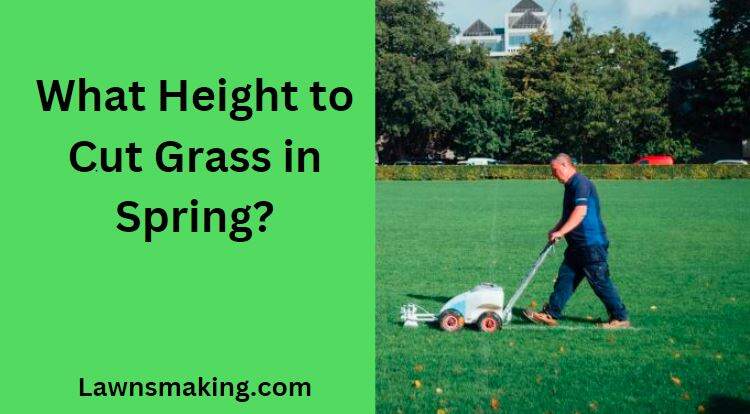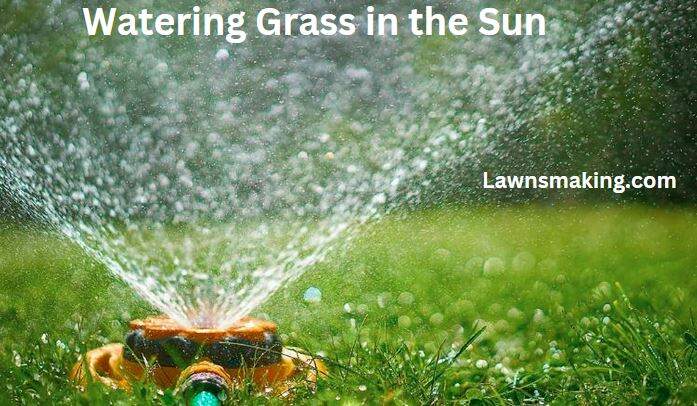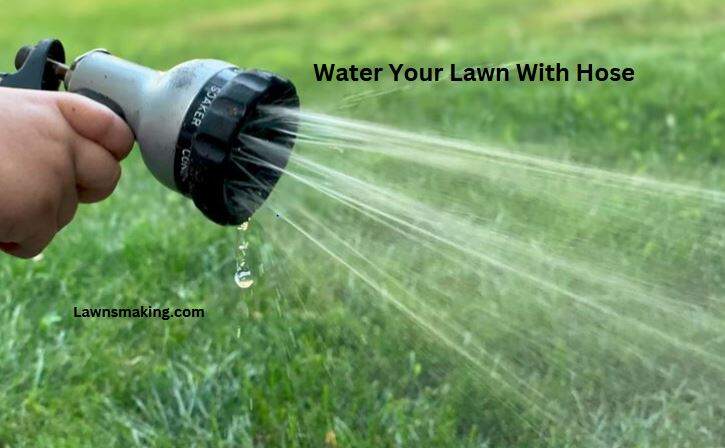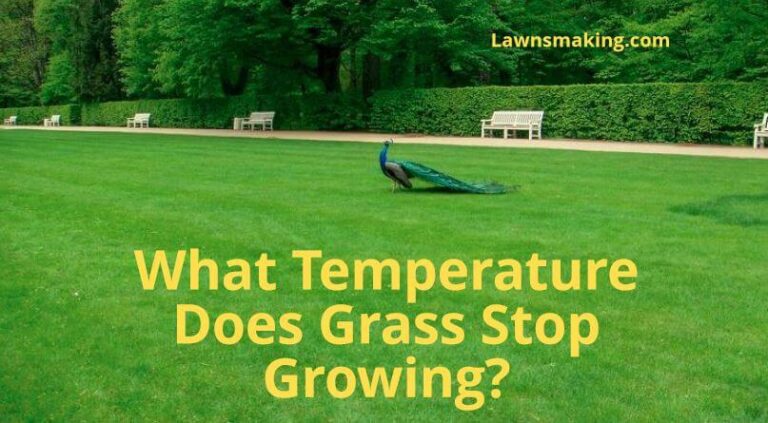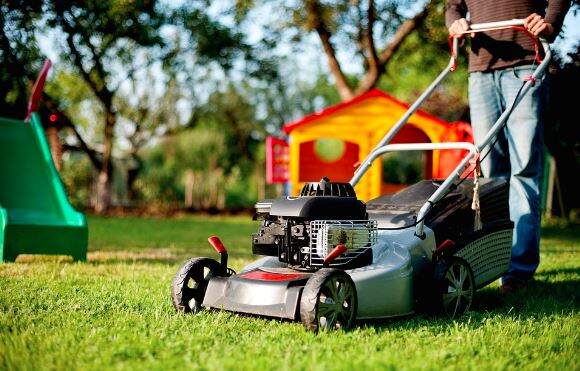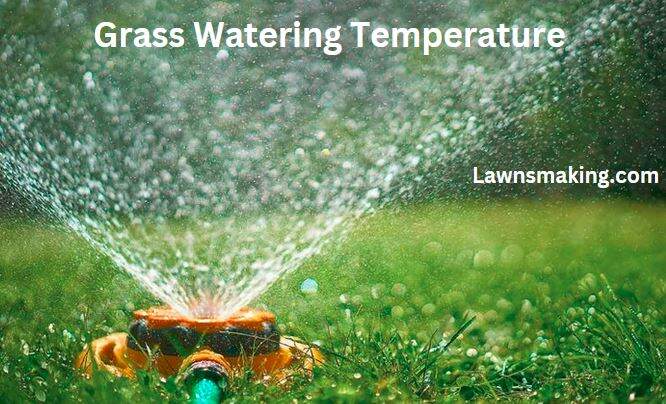
When summer temperatures soar to extreme highs, you might face the dilemma of determining what temperature is too hot to water grass. Understanding the intricacies of temperature and water absorption is crucial in maintaining a healthy lawn. As such, you should know when to withhold watering to prevent further stress or injury to your turf on scorching days.
It’s too hot to water grass at 95℉ (35℃) or higher. The sweltering heat will cause water to evaporate instantly before penetrating the soil. For this reason, avoiding irrigation past this temperature is highly recommended, as it will be less effective beyond wasting water.
In the rest of this article, I’ll discuss the ins and outs of watering your lawn on hot summer days. Rest assured that by the end of this post, you’ll ditch the guesswork and be capable of maneuvering the delicate balance of summer lawn care.
Best Time of Day to Water Your Lawn
You might assume that water is water regardless of the time of day. However, timing is of the utmost essence when irrigating your yard.
Watering your grass at the wrong time of the day can hurt your lawn’s health.
Understanding the correlation between water and temperature is crucial for beneficial irrigation.
For instance, avoid watering your lawn during the hottest periods of the day (mid-afternoon) as it is wasteful.
Around this time, the EPA reports that up to 50% of the water can be lost by evaporation, wind, or surface runoff. This causes limited water absorption, which will, in turn, stress your grass.
This leads to the question: what time should you water your turf?
The best time to water your lawn is between 6 am and 10 am when the temperatures are cooler and the breeze is gentler.
Watering during this period allows the grass roots to absorb moisture sufficiently before the day’s heat sets in and evaporates it. This way, the plants will remain hydrated all day long.
Besides, early morning irrigation allows grass blades to dry off quickly as the sun rises, preventing fungal growth and other lawn diseases.
It also lowers the likelihood for turf to go dormant during summer.
If you’re not a morning person, or for whatever reason, you can’t give your lawn a drink during this time, the next decent window is late afternoon (early evening). This should be between 4 pm and 6 pm when the heat and winds begin to dissipate.
By all means, resist the urge to irrigate your lawn at nighttime or when the air is humid. Leaving your turf wet overnight will create a sanctuary for pests, fungi growth, and other lawn diseases.
Therefore, if you want to water in the evening, ensure enough time for the grass blades to dry off before nightfall.
Related: What Temperature Is Too Cold to Water Grass?
Ideal Temperature Range for Lawn Watering
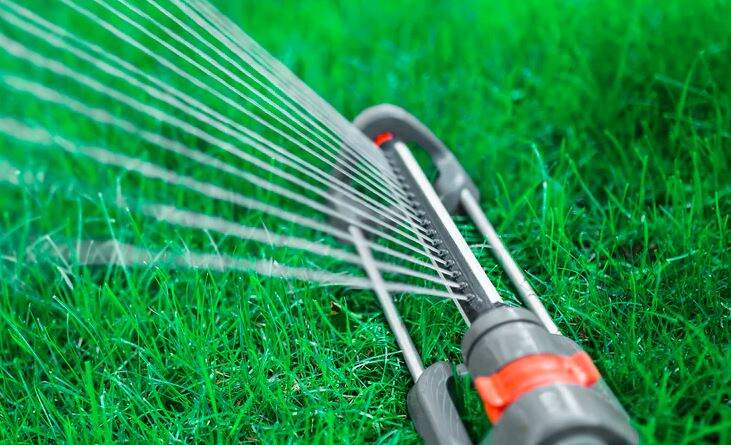
The ideal temperature range for lawn watering is between 60 and 75℉ (15.6-23.9°C). Most turfs grow actively within this range and can efficiently absorb moisture.
Grasses are tough plants that can endure a broad range of temperatures. However, they are at risk of damage when temperatures are too cold or too hot.
Watering during these extreme conditions can be counterproductive, as the plant often enters dormancy to protect itself.
At 95℉ (35°C) and above, the environment becomes too hot to water your grass. The intense heat causes water to evaporate almost instantly before reaching the roots.
Therefore, you’ll waste valuable time, water, and money.
Experts also discourage irrigation when temperatures are below 40℉ (4.44°C). The water will likely freeze to form ice crystals on the grass blades and surrounding soil, which can cause severe tissue damage, browning, or even plant death.
So, why not preserve your watering efforts for when the turf is actively growing and needs water? Here’s a guideline.
| Grass Type | Active Growth Period | Optimum Growth Temperature |
| Warm-Season Grasses | Late spring to early summer | 80-95°F (27-35°C) |
| Cool-Season Grasses | Fall and spring | 60-75°F (15.6-23.9°C) |
Effects of Watering Your Grass When It Is Too Hot
For most people, the intense summer heat equates to overwatering the lawn. However, providing just enough moisture is more beneficial than soaking it wet.
Overwatering will only lead to water wastage, as extreme heat accelerates evaporation.
Frequent and shallow irrigation will encourage the growth of shallow roots as the plant will be too lazy to grow deeper in search of water. This will make the turf vulnerable to heat stress.
Excess moisture will also encourage weeds, pests and diseases.
On the other hand, underwatering can easily make your grass drought-stressed, resulting in stunted growth, browning, and dry patches. Your lawn will also be vulnerable to weed invasion, foot traffic and pet damage.
Deep and infrequent watering will help your grass survive the heat by ensuring profound root growth. It will also promote steady plant growth, resulting in a dense, healthy lawn resilient to weeds, pests and diseases.
To achieve this, provide 1 to 1.5 inches of water weekly for cool-season turf and 0.5 to 1 inch for warm-season turf. This amount ensures the top 6 to 8 inches of soil remains moist enough for grass to thrive in hot conditions.
Lastly, remember that the grass enters dormancy when the temperature rises beyond 95 °F. At this time, it’s not advisable to water it.
Find Out: Does Watering Grass in the Sun Burn It?
How to Adjust Lawn Watering Based on Temperature
Staying alert for the local weather forecast is vital to adjusting lawn watering practices.
Short periods of hot weather will only require you to minimize watering. However, you’ll want to postpone irrigation altogether and let your turf go dormant when high temperatures are forecasted to surpass 90°F (32.22℃) for an extended period.
As such, consider taking note of your area’s daytime high temperatures every year.
Studying this trend will help you to establish the highest temperatures your lawn can withstand. It will also enable you to adjust your watering regimen accordingly before drought stress occurs.
Always pay close attention to the day’s peak temperatures rather than morning and evening, and modify your irrigation as follows.
| Temperature | Watering Adjustments |
| 85°F (29.44℃) | Cut watering duration by 25% |
| 90°F (32.22℃) | Irrigate only when you observe drought stress signs |
| 95°F (35℃) | Stop watering until the heat cools |
| 100°F (37.78℃) and above | Stop watering completely |
In addition, ensure to inspect your grass for heat stress symptoms regularly. The visual cues will also tell you when to modify your watering routine.
Final Words
A successful summer lawn irrigation regimen goes beyond having a regular watering schedule.
Understanding what temperature is too hot to water grass, the best time and temperature to water your lawn, how much water to provide, and how often to do it will significantly impact your lawn’s health and longevity.
It will also ensure the economical use of valuable resources.
Strive to water only when needed, providing long and deep soakings early in the morning or late in the afternoon. Letting your grass enter dormancy when it’s scorching hot will also help it stay safe until temperatures are tolerable again.
